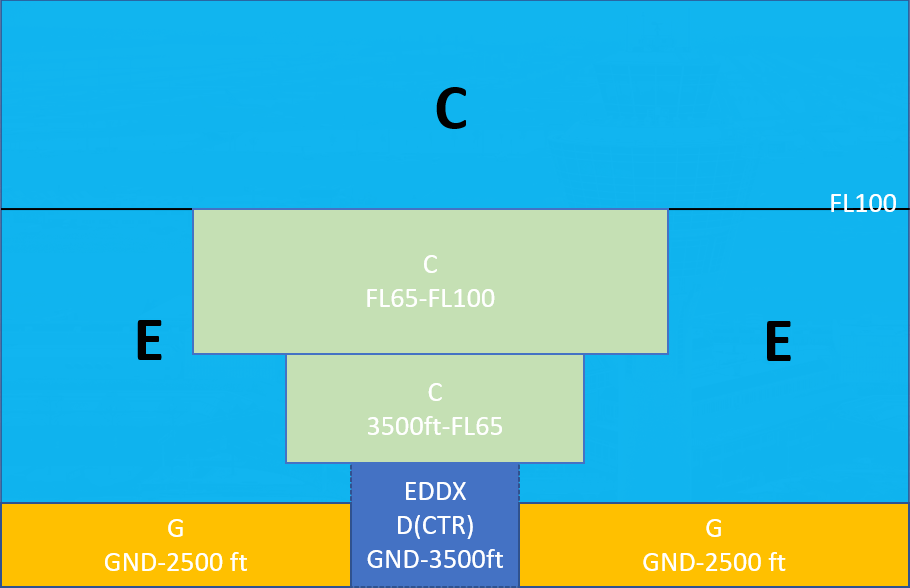Overview
Airspace classes according to ICAO
What is airspace? A simple question at first glance, but how about the details? Legislation states that airspace is the area that extends upwards over a certain part of the earth's surface.
However, with more and more air traffic, it was no longer possible to simply categorize ‘airspace’ as being the same everywhere. Rules had become necessary.
To this end, the ICAO (International Civil Aviation Organisation) introduced airspace classes. The categorisation of an airspace class regulates, among other things, who is allowed to fly in this airspace, whether they need clearance to do so, how fast they are allowed to fly and much more. In our everyday lives, this can be roughly compared to the introduction of different types of roads. Let's take a motorway as an example and compare it with a local road: while there is no speed limit on the German motorway, you are only allowed a top speed of 50 km/h in urban areas. Alternatively, let's take a look at who is allowed to drive there: Anyone can drive in urban areas, including cyclists. However, bicycles are not allowed on the motorway.
But now back from the road to the air: there are the airspace classes A, B, C, D, E, F and G. These in turn are divided into controlled airspaces (A-E), i.e. airspaces in which an IFR flight receives ATC service, and uncontrolled airspaces (F and G), in which there is only FIS and/or advisory service. A is the most restrictive airspace (for example, only IFR may fly here, VFR is absolutely prohibited), G is the least restricted airspace.
For the sake of simplicity, however, we will limit ourselves to the airspaces currently used in Germany, which are C, D, E and G. You can find an overview of these in the table below. For each air space class, the table shows whether and how different flight rules (VFR - visual flight rules and IFR - instrument flight rules) are separated from each other, what service the flight receives from air traffic control in this airspace, how fast it may fly, whether it must be in contact with a controller in this airspace (COM) and whether it requires an ATC clearance to enter this airspace.
You can find more information on airspaces underon this link,link, although this is not mandatory for S1/S2 training.
In the two pictures you can see an example of what airspace structure in Germany might look like. The top image shows a large airport such as Munich, while the bottom image shows a smaller airport such as Bremen.



